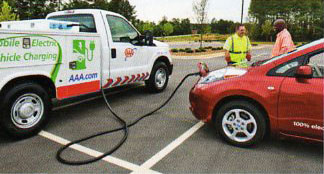Here’s a fresh look at our use of resources, using mustard packets as an example…
When someone picks up too many mustard packets to go with their sandwich, they are causing a whole chain of excess waste:
- It takes labor, fuel, fertilizer, water and wear on farm equipment to grow mustard plants.
- Labor costs, fuel, wear on trucks and roads, wear on trains and tracks, or wear on planes and airports all go into transporting the ingredients for mustard from their sources to the factory.
- There are labor costs, factory space, machines, electricity, water, plastic and much more that go into producing mustard packets.
- Labor costs, fuel and wear on trucks and roads all go into transporting mustard packets from the factory to the distributing warehouse.
- More labor costs, fuel and wear on trucks and roads all go into transporting mustard packets from the distributing warehouse to the restaurant.
- Fuel and wear on vehicles and roads go into transporting mustard packets from the restaurant to your home or office.
You are right in thinking that all of this has to happen whether someone uses one mustard packet or four. But if everyone grabbed just one mustard packet instead of four – or one paper towel instead of four – the whole system would slow down and there would be fewer trucks on the road, less pollution and so on.
Join me in pausing to think about ways we can use just what we need.


 About once a week for about a year, I rode my bicycle past this completely full car lot. All these cars cannot even be seen by the public from the dealership’s already ample lot. This is an overflow lot on a side street.
About once a week for about a year, I rode my bicycle past this completely full car lot. All these cars cannot even be seen by the public from the dealership’s already ample lot. This is an overflow lot on a side street. It’s very easy – and clean – to turn off your vehicle when you’re parked.
It’s very easy – and clean – to turn off your vehicle when you’re parked. This is a guest post by my brother Bill.
This is a guest post by my brother Bill. Almost every situation where we make a decision involves some compromise.
Almost every situation where we make a decision involves some compromise.
 I know some people that are really into local food. And the reasons to eat food grown locally are good:
I know some people that are really into local food. And the reasons to eat food grown locally are good: Super high-performance and green? As you think about your next luxury sedan, you may be thinking about buying a
Super high-performance and green? As you think about your next luxury sedan, you may be thinking about buying a  The Fisker is a clear winner in the distinctiveness realm. You won’t see another on your block, guaranteed – no matter where you live. But for everything else, the BMW wins.
The Fisker is a clear winner in the distinctiveness realm. You won’t see another on your block, guaranteed – no matter where you live. But for everything else, the BMW wins. Most Americans are faced with a choice when they enter a big retail store… go through the automatic doors or the push-open doors?
Most Americans are faced with a choice when they enter a big retail store… go through the automatic doors or the push-open doors? I doubt if you read
I doubt if you read